At the 2024 Paris Olympics, athletes of the Chinese Sports Delegation team captured international attention with their remarkable achievements. Beyond the stadiums, another form of Chinese excellence took center stage in a different “arena.” Simin Wang, a 2006 alumnus of the University of Michigan – Shanghai Jiao Tong University Joint Institute (UM-SJTU JI, JI hereafter), and his team at Zhuomo Zhuomo, played a pivotal role as the design and curatorial team for “China House” in Paris. Through their work, they brought Chinese traditional culture to a global audience, adding cultural significance to the Olympics experience.
“China House,” located at the historic Solomon de Rothschild Mansion in the heart of Paris, served as a comprehensive service center for the Chinese delegation during the international event. The design concept, “Silk Scroll,” was the focal point of the space, elegantly weaving through the venue. The silk scroll not only acted as the main visual element but also shaped the structure of the interior spaces, linking them together and creating a dialogue with the mansion’s historic architecture.
The juxtaposition of the lightweight, colorful, and flowing silk with the Rothschild Mansion’s solid, ancient, and structured form offered a visual and conceptual contrast. History and modernity met here in harmony, as Eastern and Western cultures collided, communicated, and engaged with one another. This thoughtfully designed space became a testament to cultural exchange at its finest.
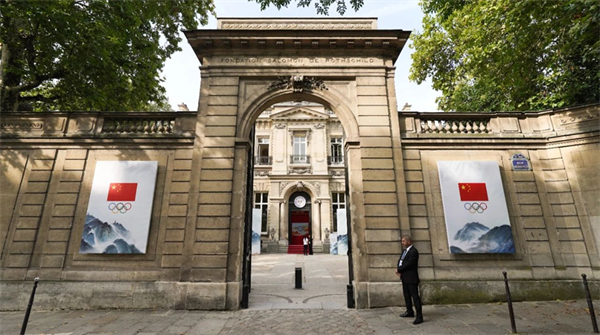
Entrance of the “China House”
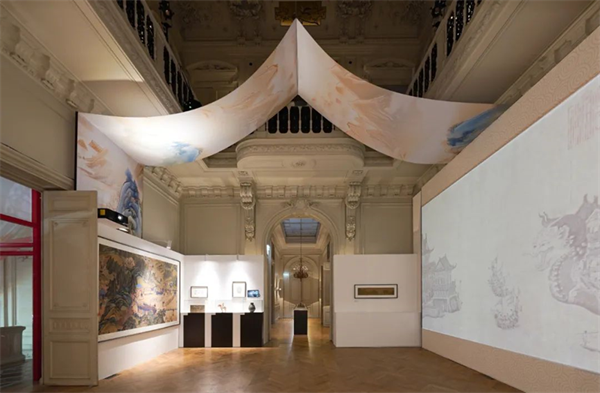
Cultural display area of Chinese sports
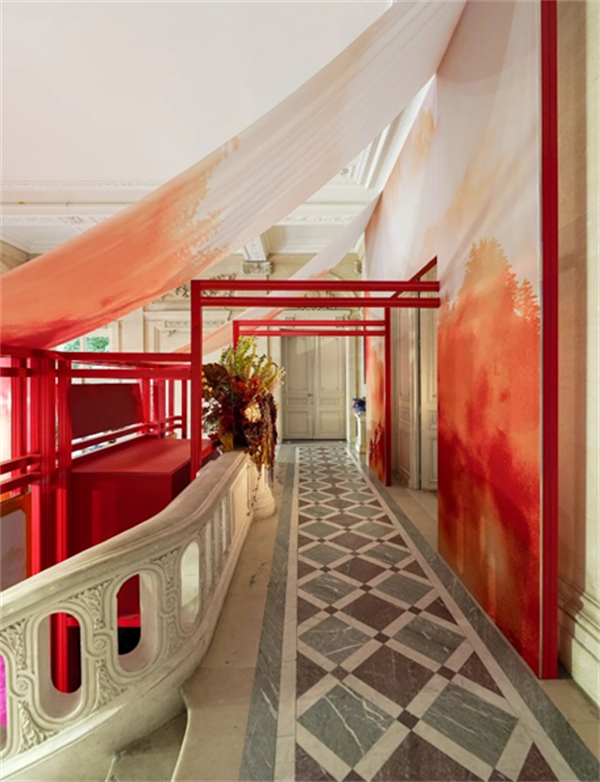
Silk scrolls decorate the exhibition area.
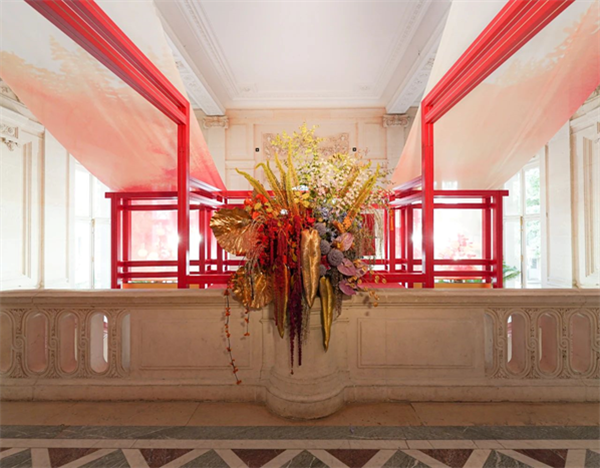
The hall is supported by an aluminum profile structure, showcasing a design that evokes the form of traditional Dougong (interlocking bracket sets) used in Chinese architecture.
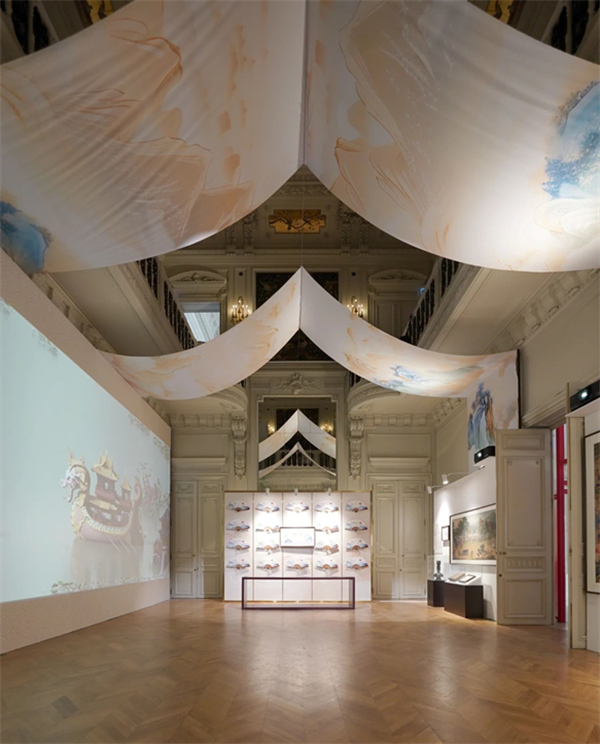
The long scroll of silk forms the form of a traditional Chinese palace roof in space, echoing the courtyard of Rothschild Mansion.
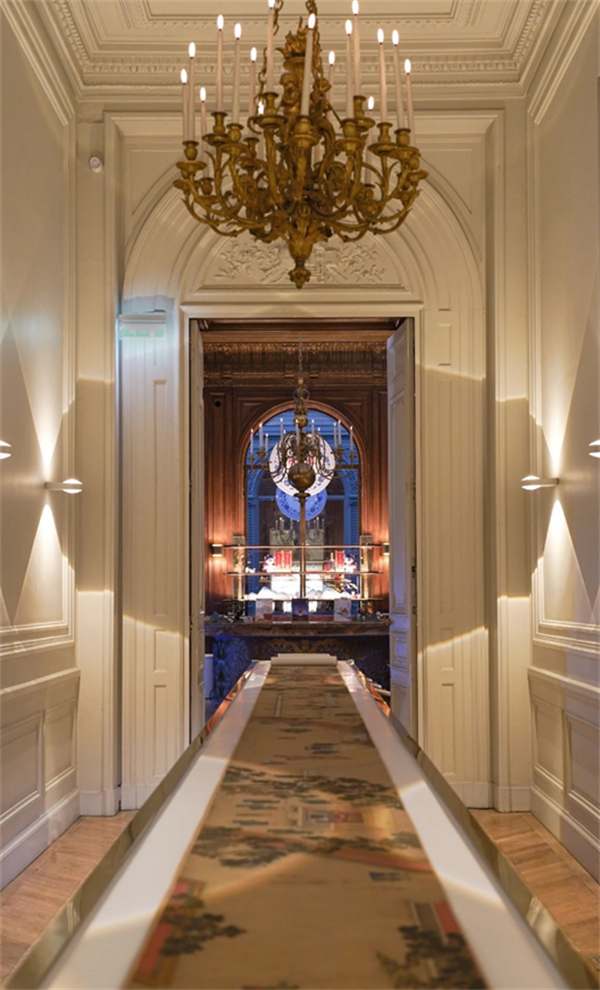
The painting “The Enjoyment of Zhu Zhanji” depicts several traditional Chinese sports, including throwing the pot, beating the ball, polo, and cuju (an ancient form of soccer). This reflects the deep and enduring tradition of Chinese culture.
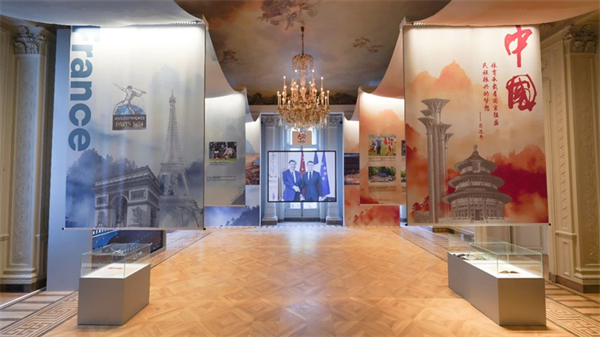
Entering the China-France sports exchange exhibition area, the drapes representing France and China unfold in sequence, and the silk scroll extends to illustrate the history of friendly exchanges between the two countries in the field of sports.
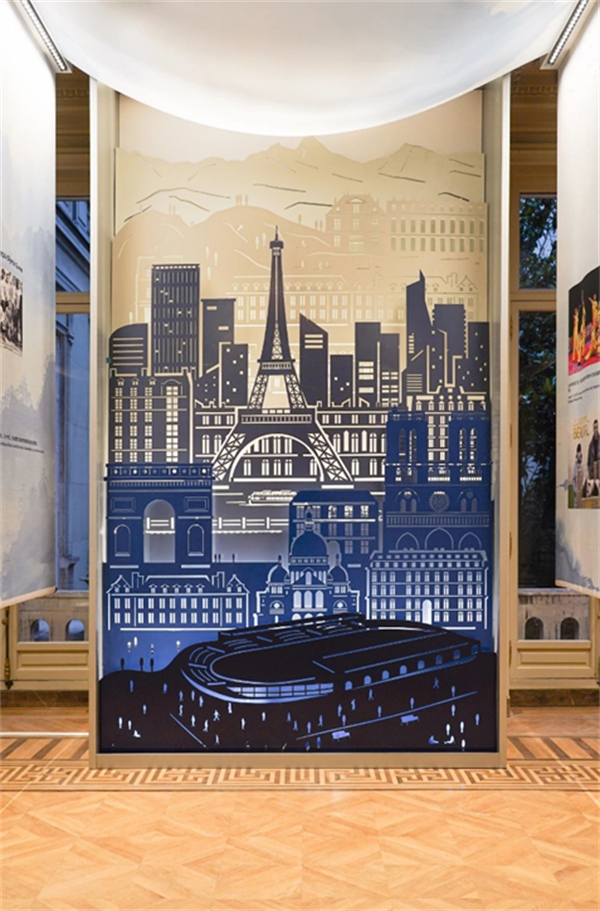
On one side of the French drape, a metal paper-cutting installation depicts the venues and scenes from the 1924 Paris Olympics and the Chamonix Winter Olympics. In the middle of the scroll, a boat sails along the Seine River, presenting a classic scene from the opening ceremony of the current Olympics.
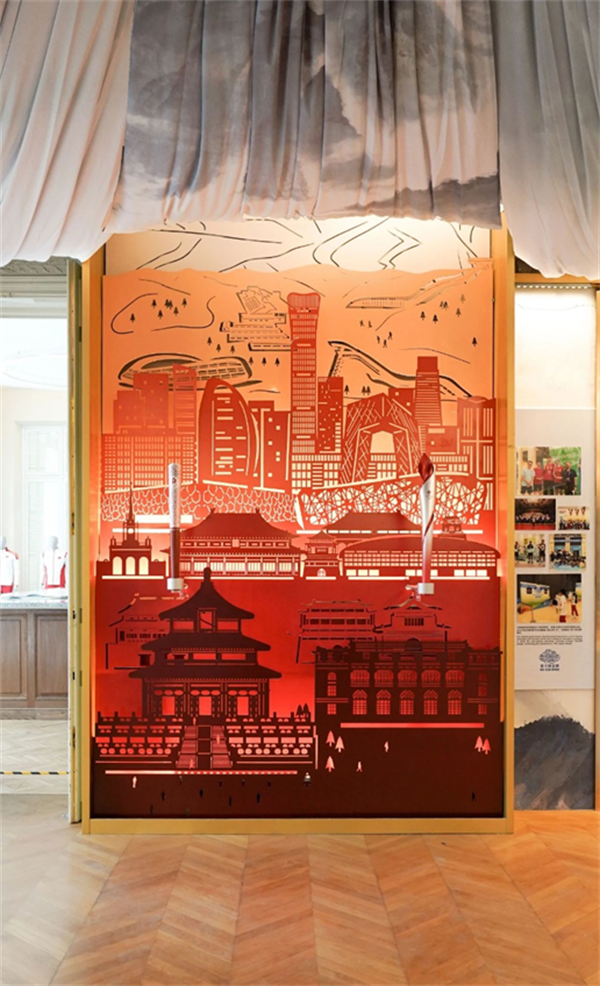
In front of this giant paper-cutting installation, the torches from the 2008 Beijing Olympics and the 2022 Beijing Winter Olympics are displayed, becoming a popular photo spot within the exhibition hall.
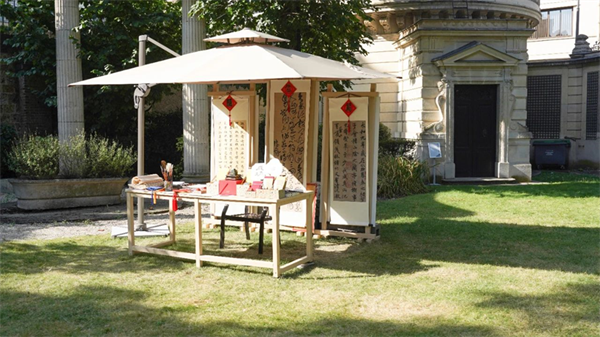
Display of Chinese Calligraphy and Seal Carving
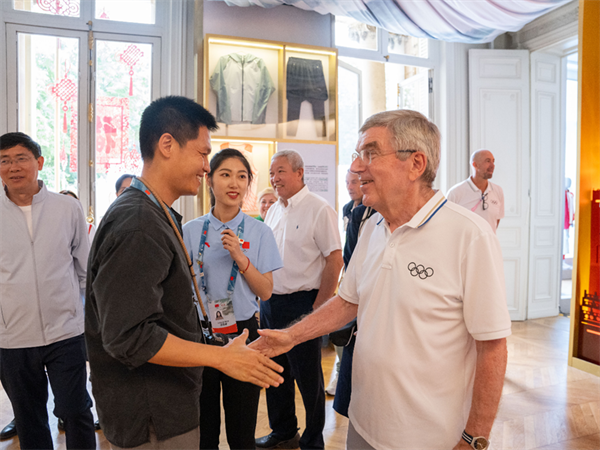
International Olympic Committee President Thomas Bach shakes hands and converses with Simin Wang, the chief designer and curator of the “China House.”
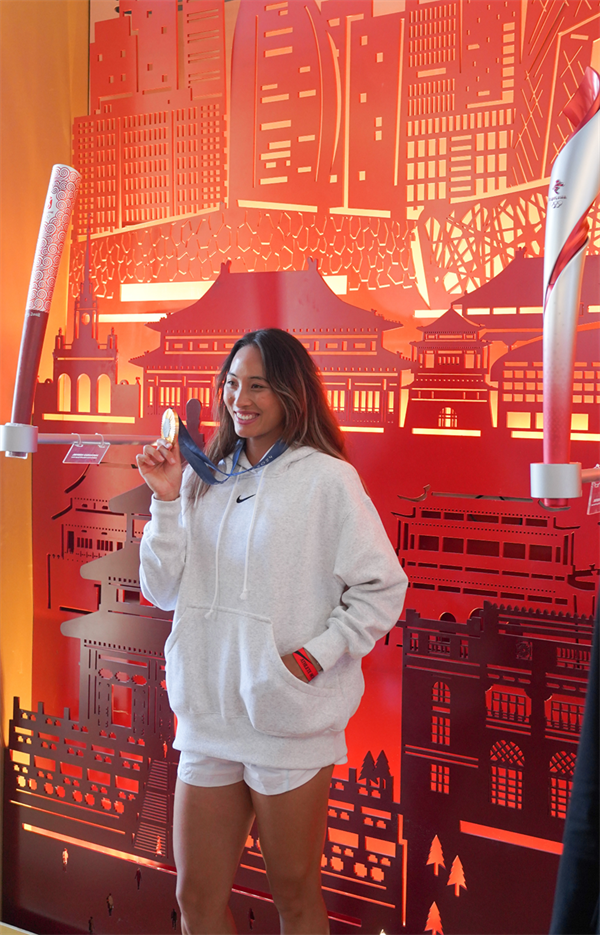
Tennis player Qinwen Zheng shows her Olympic gold medal at the “China House.”
Personal Profile
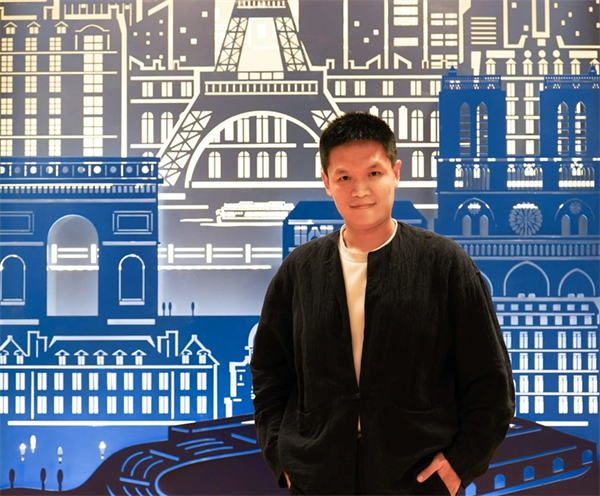
Simin Wang, a 2006 undergraduate alumnus of the University of Michigan – Shanghai Jiao Tong University Joint Institute, is the founder and CEO of Zhuomo Zhuomo Technology (Beijing) Co., Ltd. As a designer, he has won multiple awards in architecture, interior design, and branding, including the Asia-Pacific Design Yearbook, the Paris DNA Design Awards, and the SABRE Awards. As an entrepreneur, he was recognized as a G20 Elite Talent and listed in Forbes China’s 30 Under 30. His company, Zhuomo Zhuomo, serves 19 enterprises, and his entrepreneurial experience has been included in case studies by Tsinghua University’s School of Economics and Management and China Europe International Business School.





